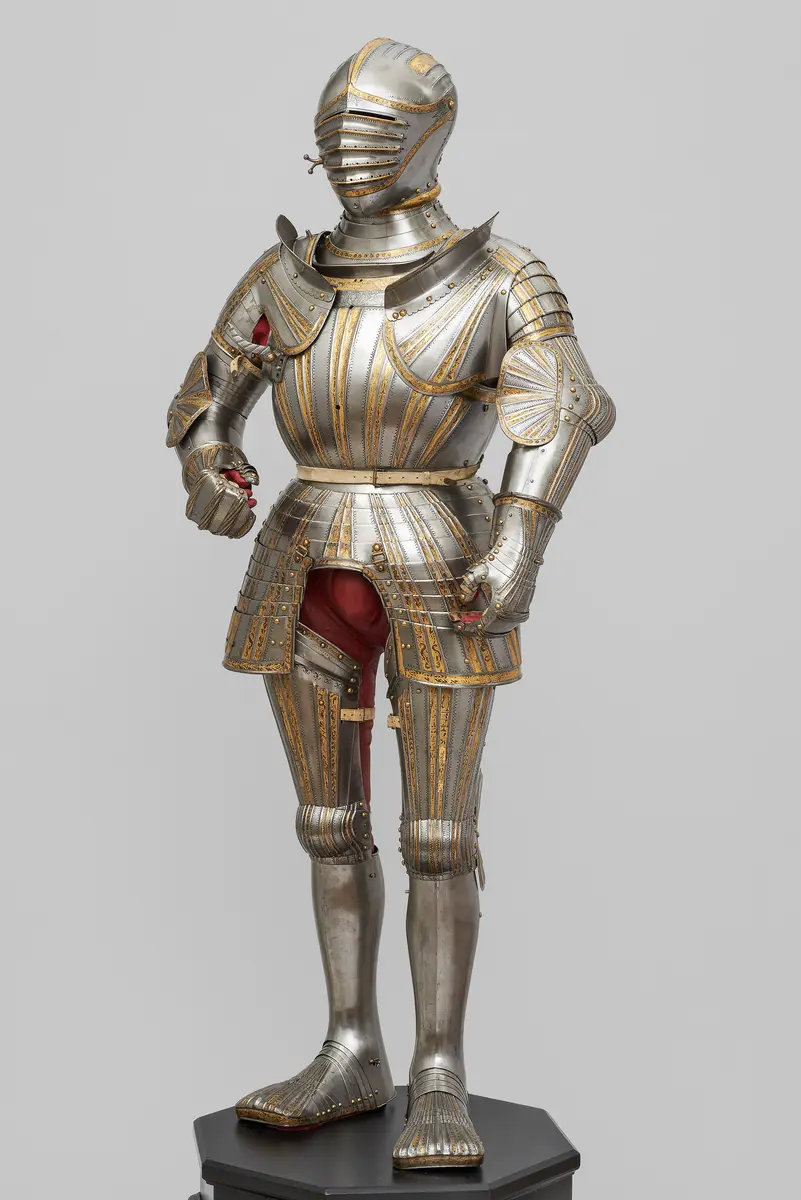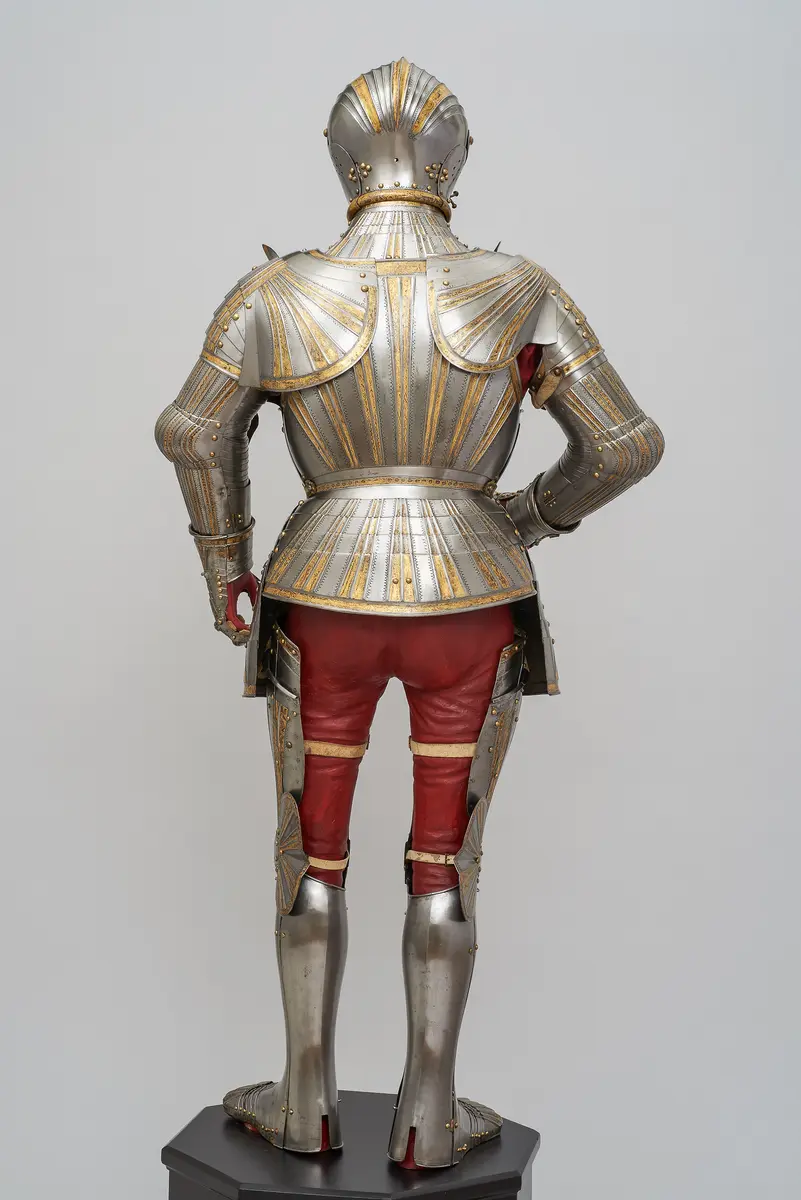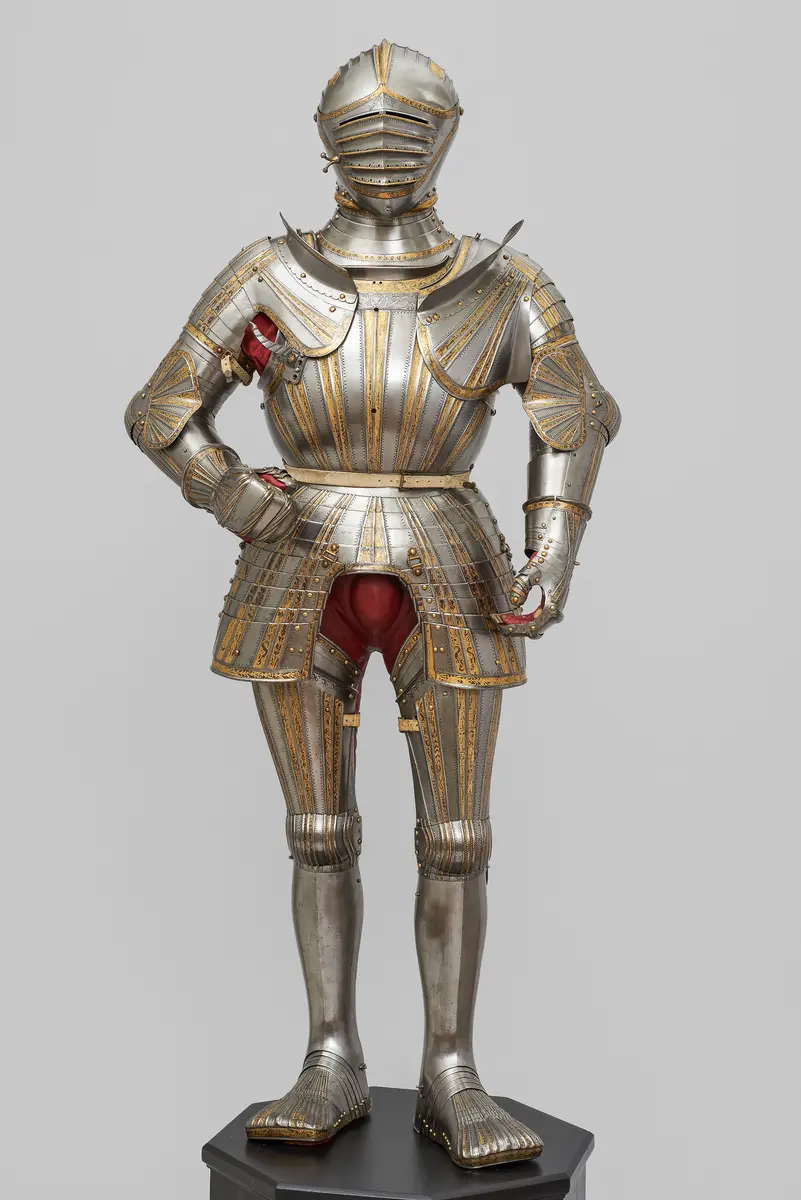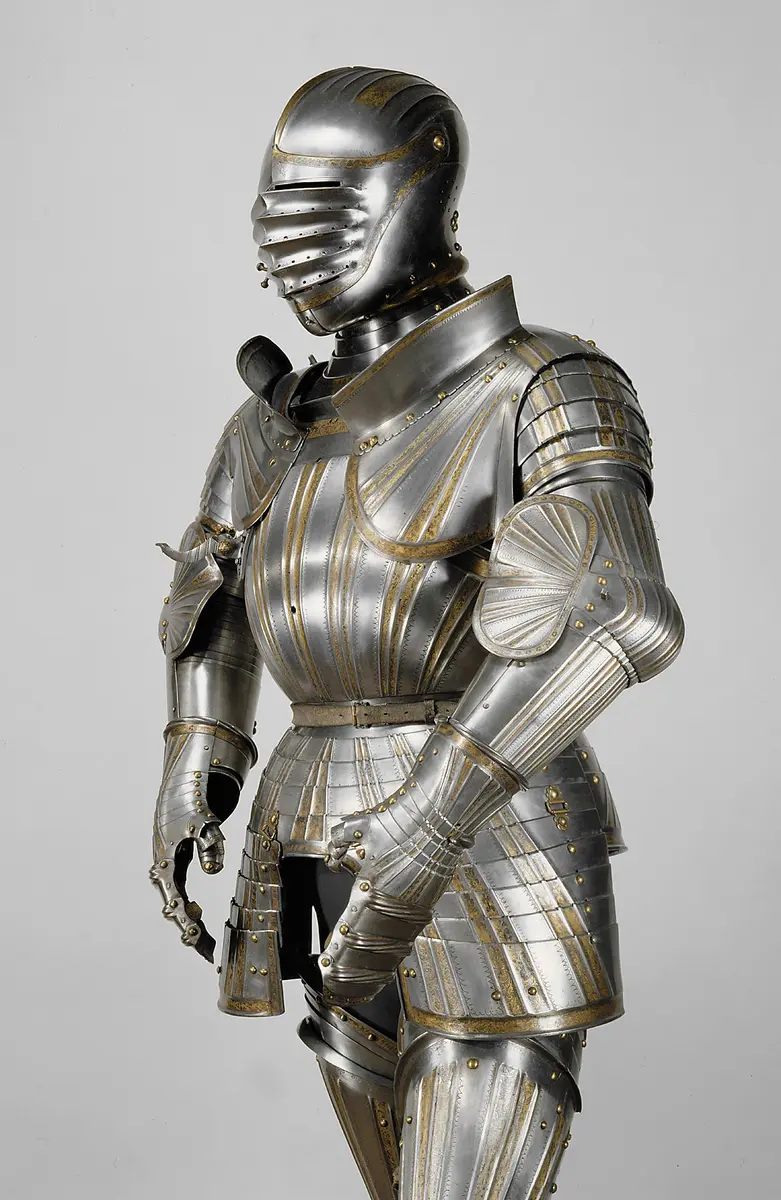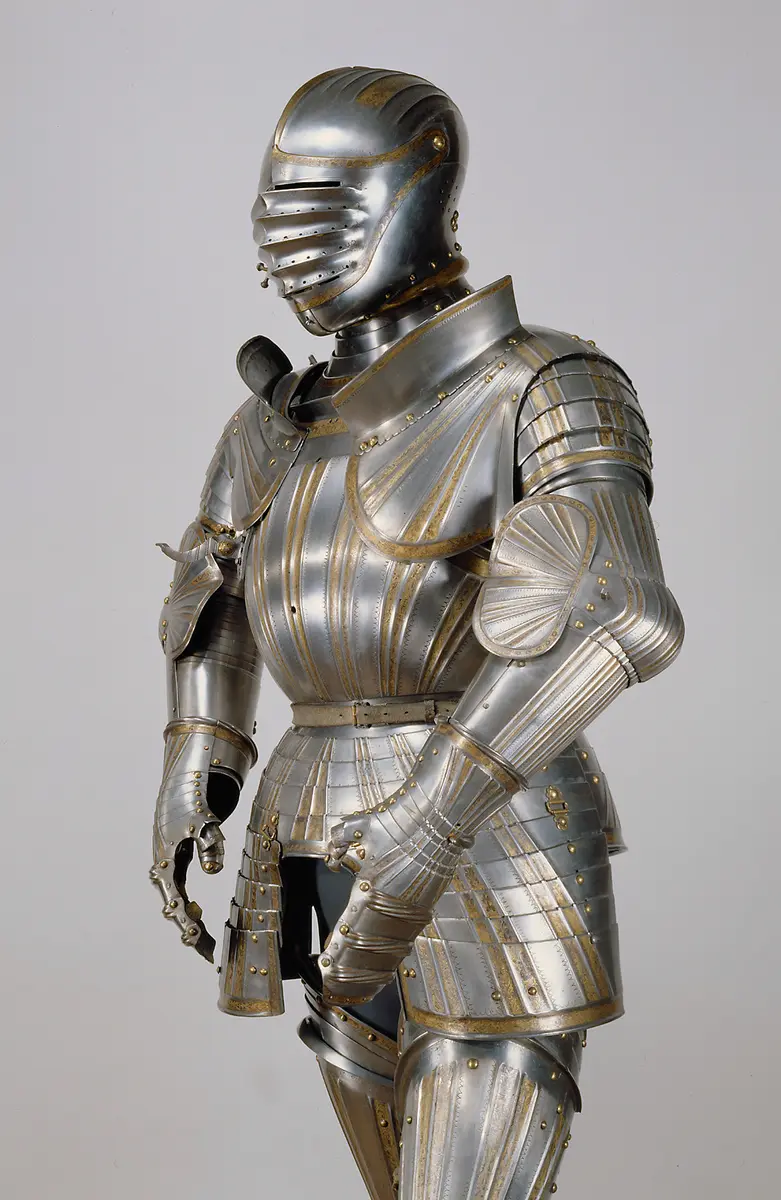Besitzer/in:
Matthäus Kardinal Lang von Wellenburg , (?) (1468 - 1540) DNB
Künstler/in:
Konrad Seusenhofer , (Plattner) zugeschrieben (erw. 1504 - gest. 1517, tätig in Innsbruck)
Zeit:
1511
Objektbezeichnung:
Riefelharnisch, Riefelküriss für Feld und Turnier
Kultur:
Innsbruck
Material/Technik:
Eisen, geschmiedet, getrieben, teils geätzt. Ätzdekor: teils feuervergoldet, teils schwarz geätzt. Schnallen, Nietkappen: Messing. Leder.
Maße:
Maße ohne Sockel: H 185 cm x B 79 cm x T 62 cm
Maße mit Holzsockel: H 218 cm x B 79 cm x T 62 cm
Gesamtgewicht: 25,3 kg
Signatur:
keine
Stempel / Zeichen:
keine
Bildrecht:
Kunsthistorisches Museum Wien, Hofjagd- und Rüstkammer
Inv. Nr.:
Hofjagd- und Rüstkammer, A 244
